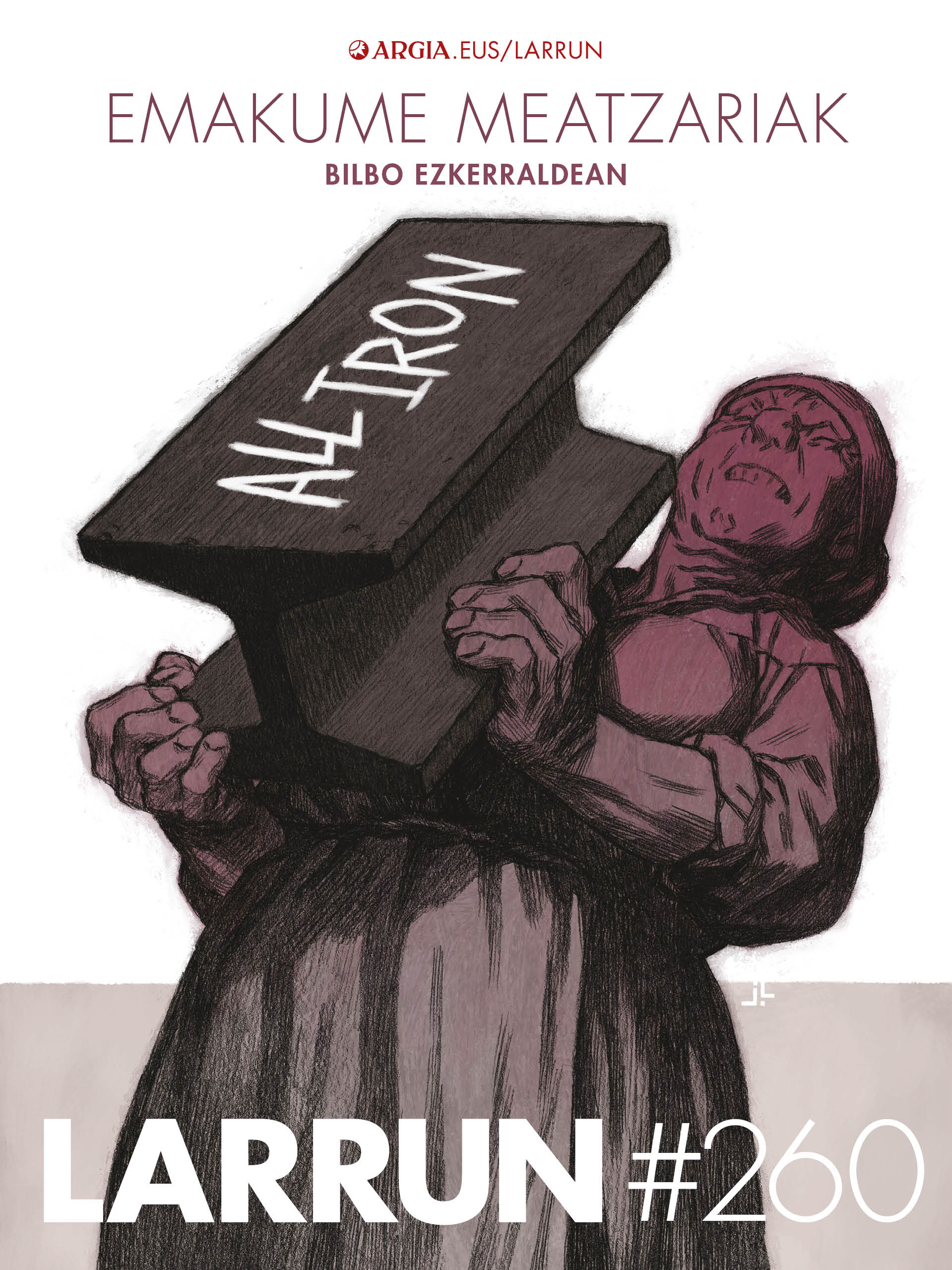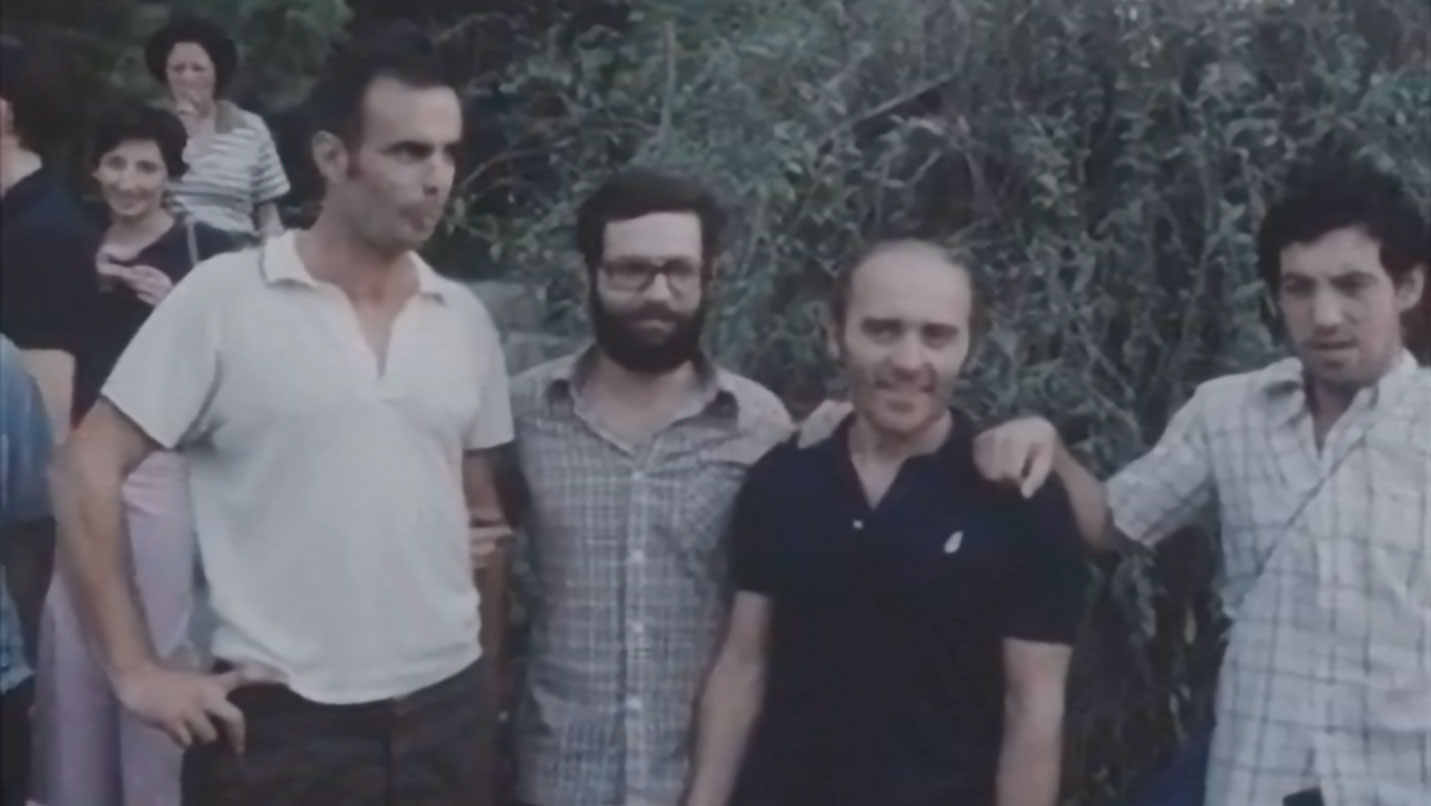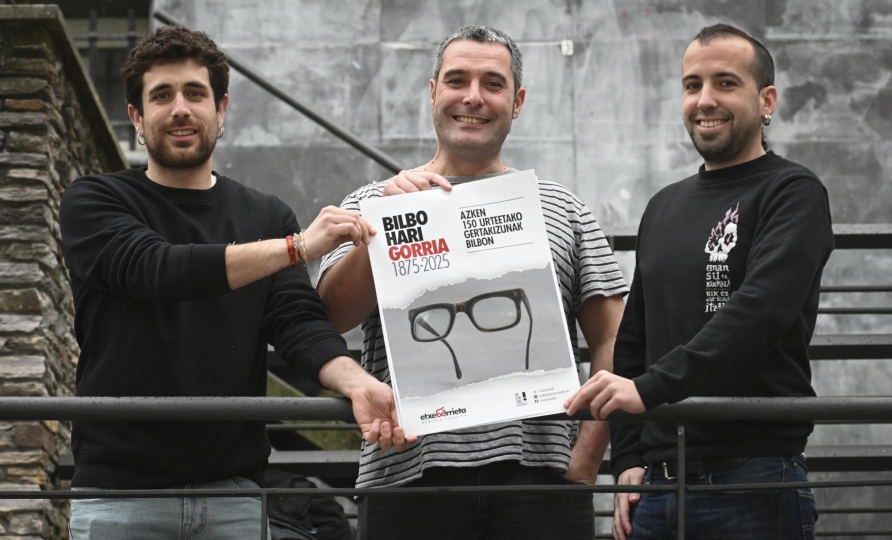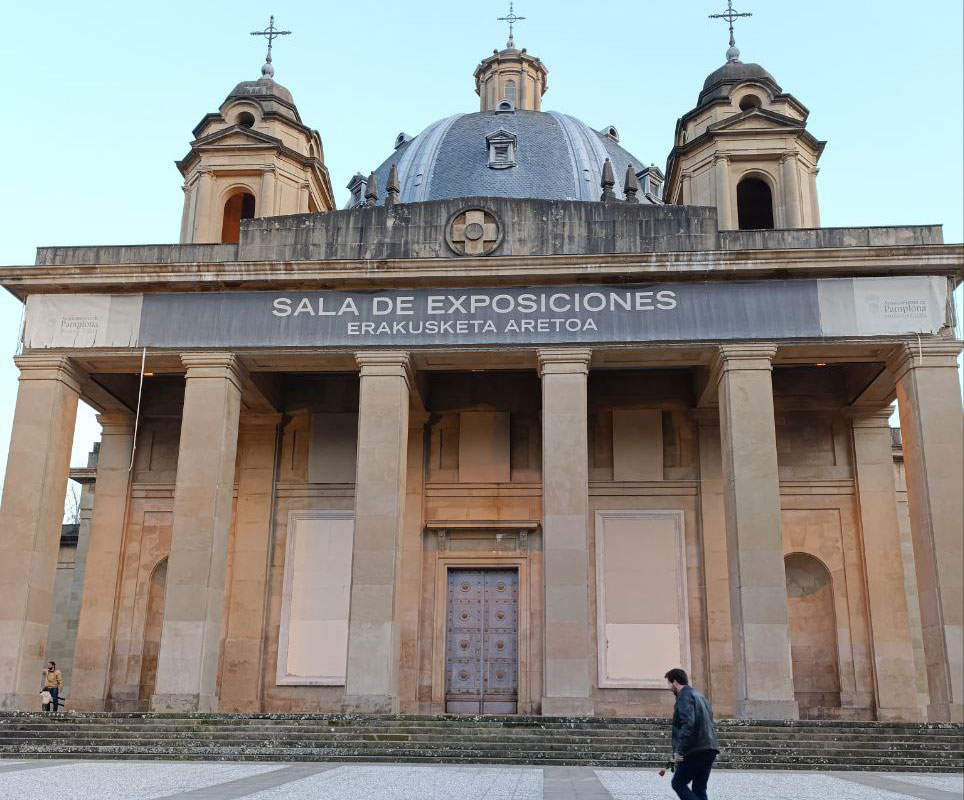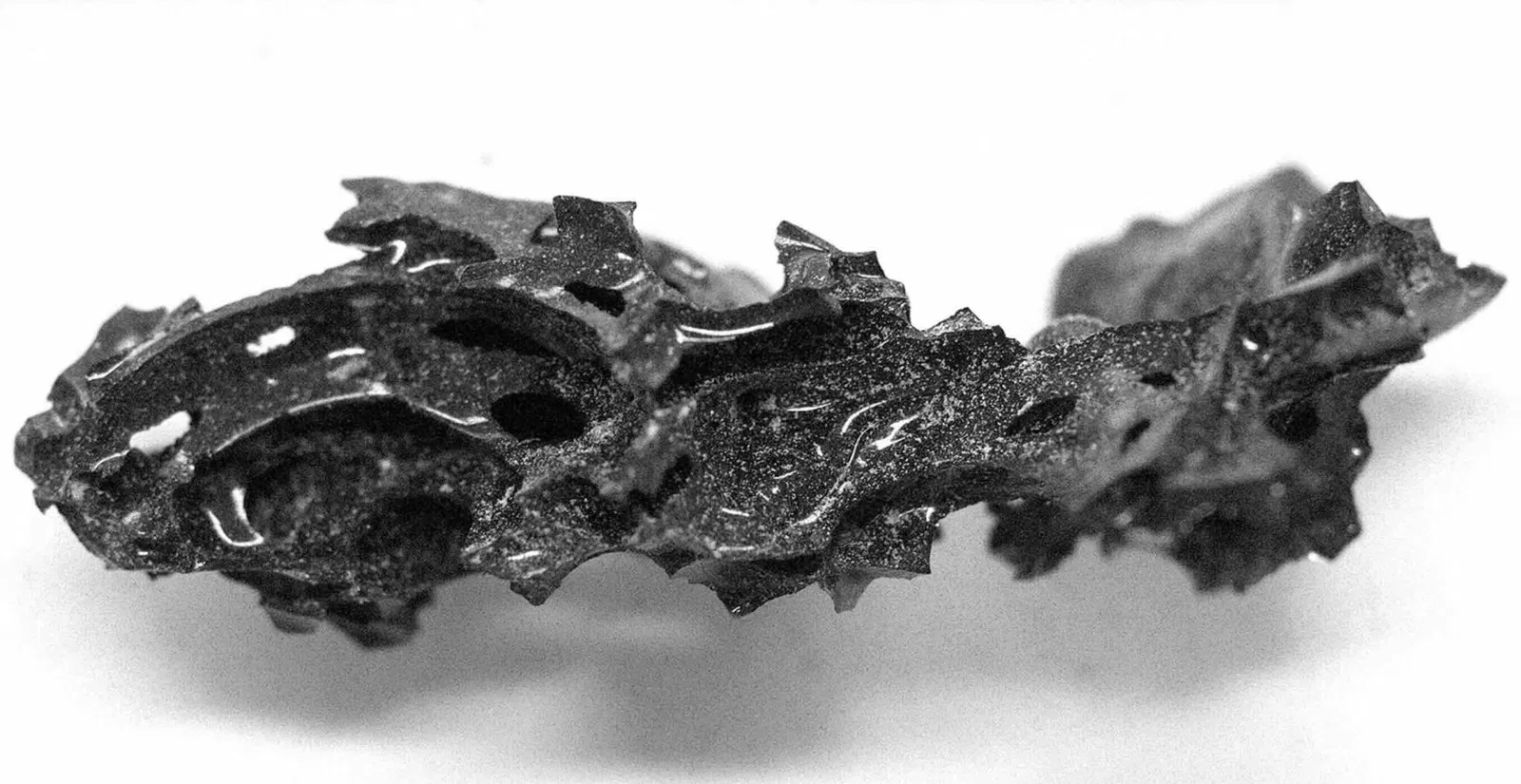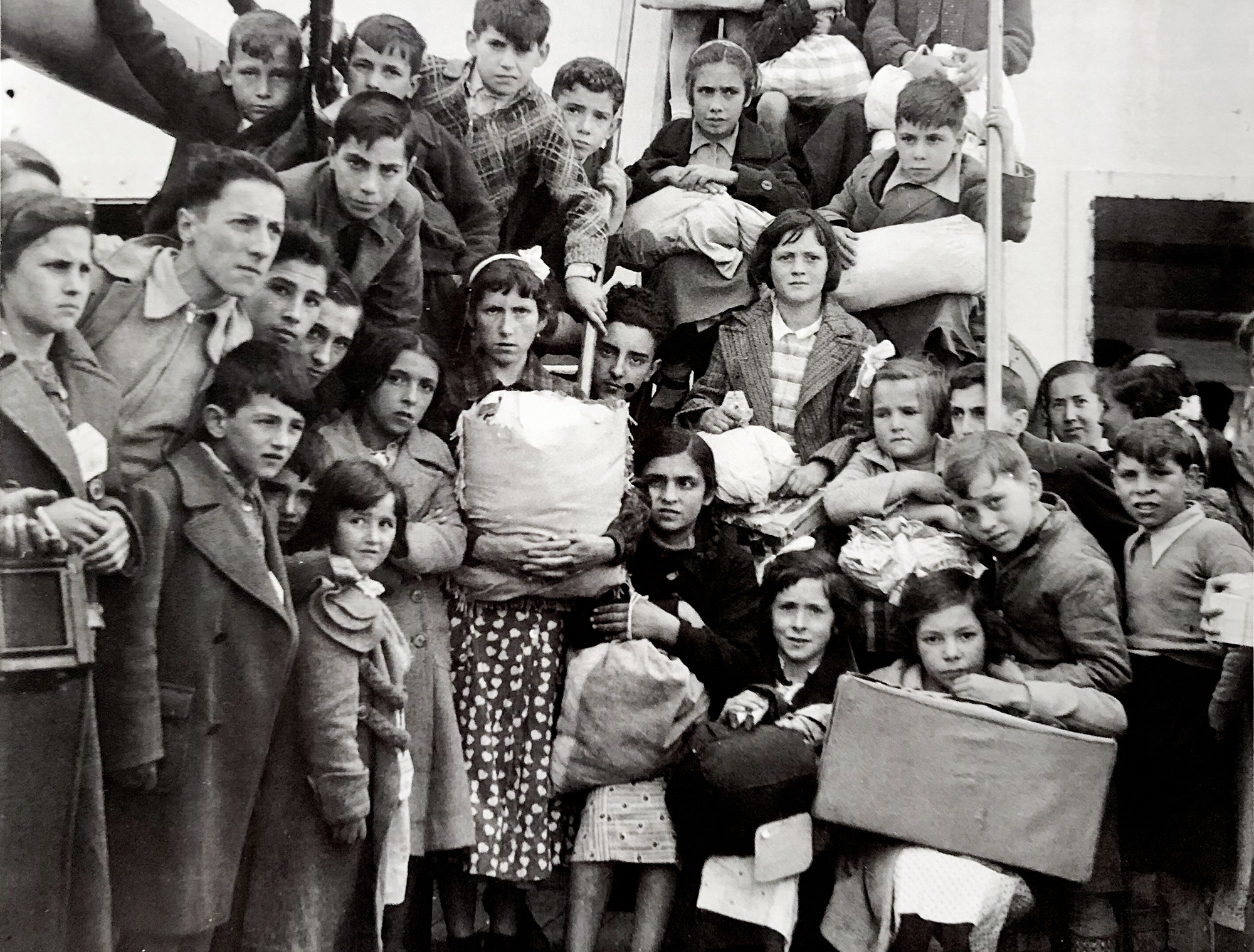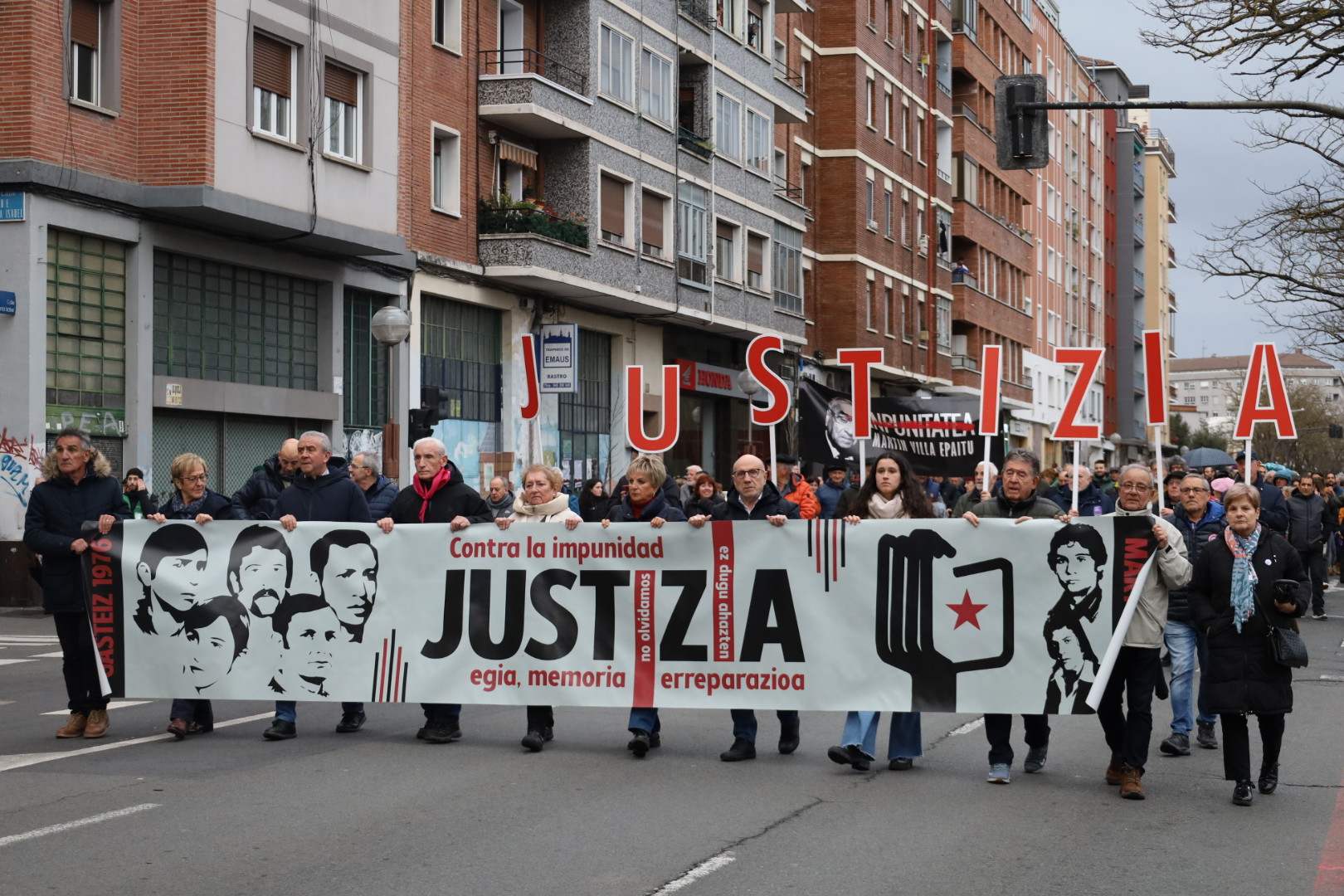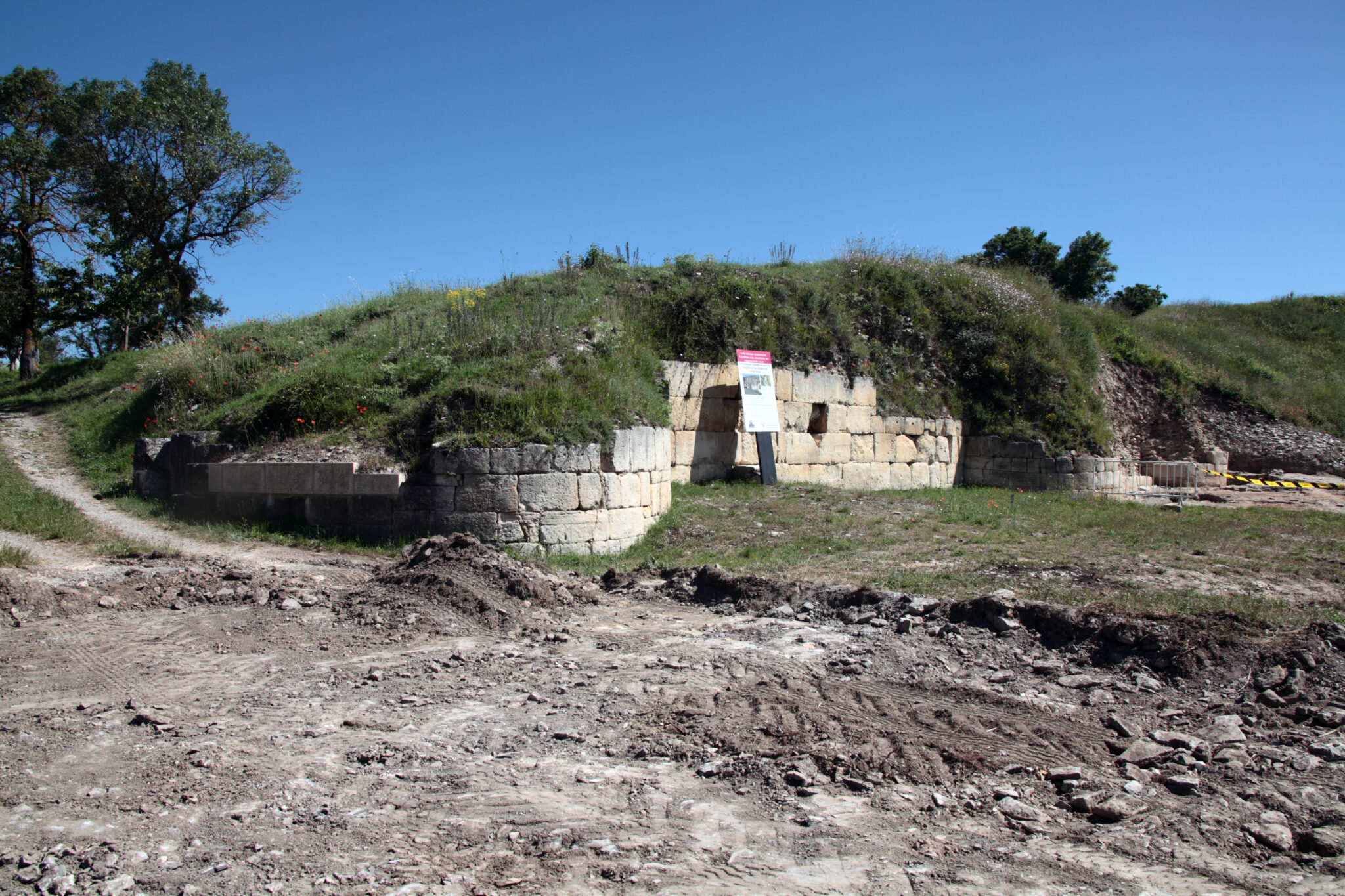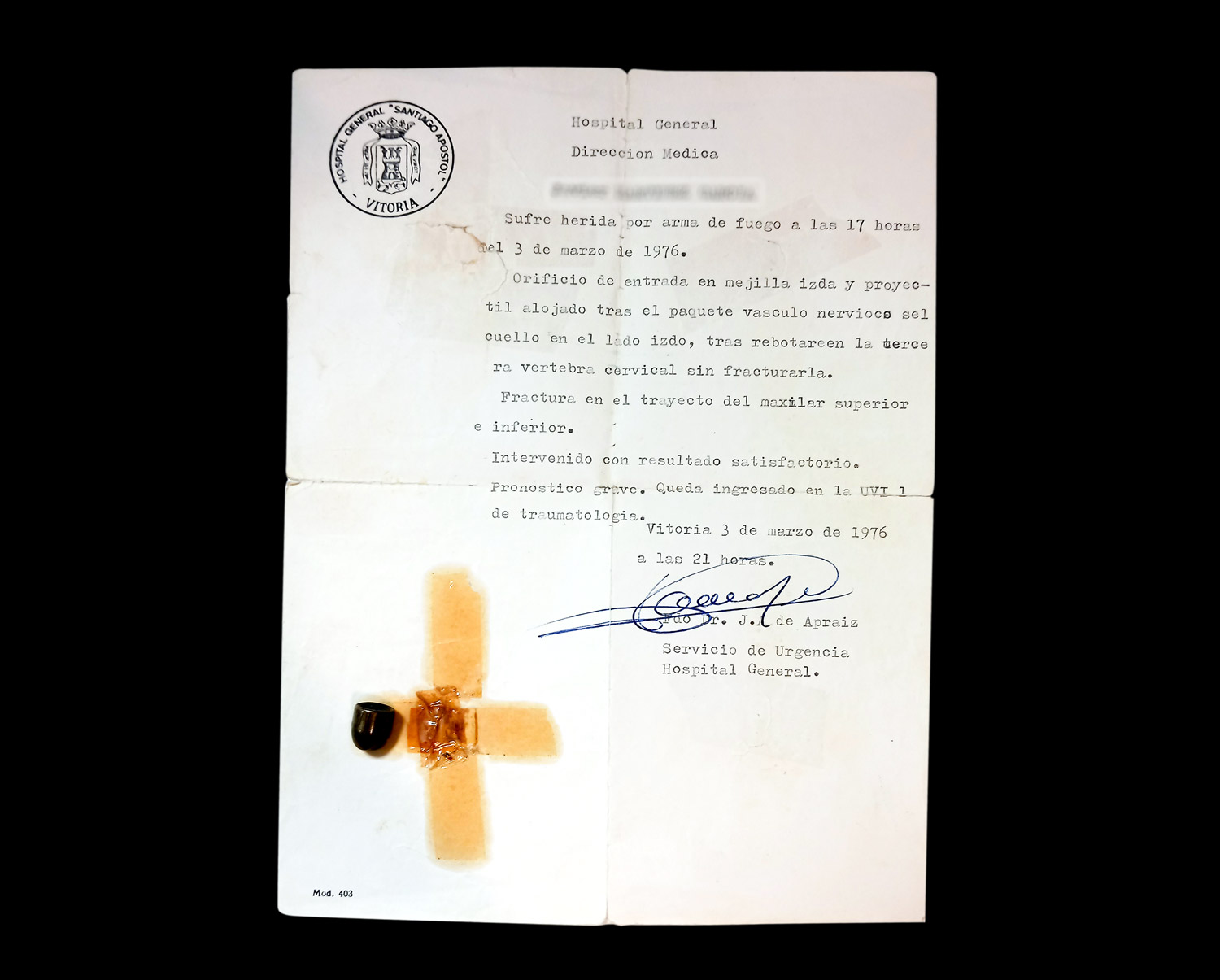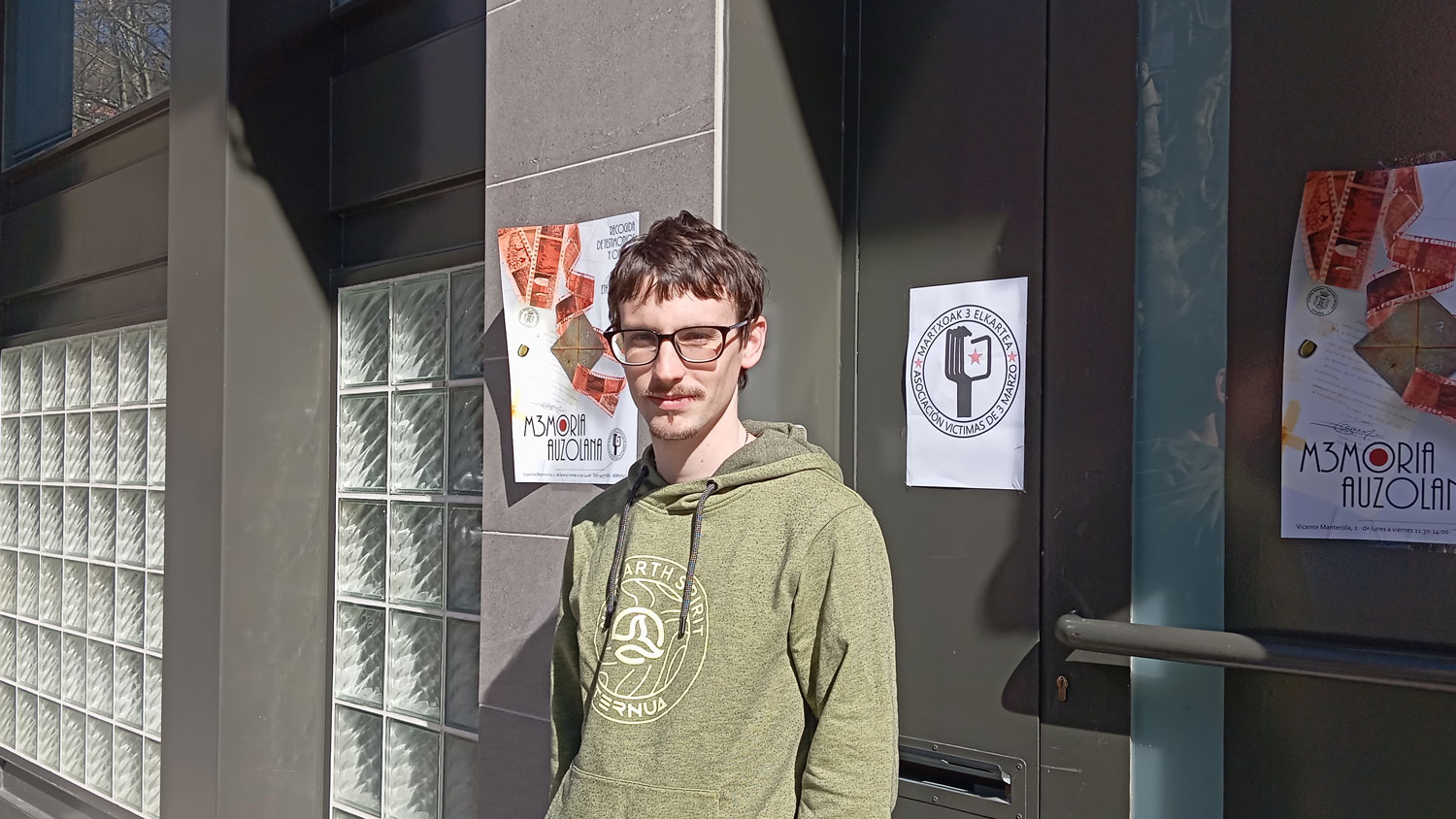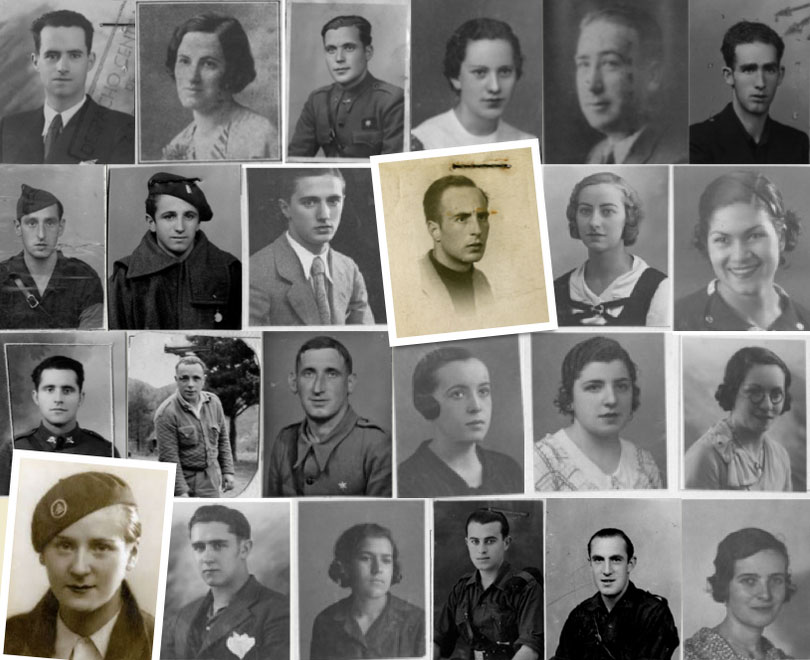The traitors women who built Bilbao
- Impressive crater excavated in the mountains of Triano, as broad and deep as oblivion. On the edge of the irregular mouth of seven hundred meters by four hundred meters, with a firm grip on the railing, we glanced at the well that is 180 meters below: on the walls that sculpted the steps that narrow from top to bottom, the negative of a zigurat, the impressive temple of a god forgotten a long time ago. The Concha is a cave.
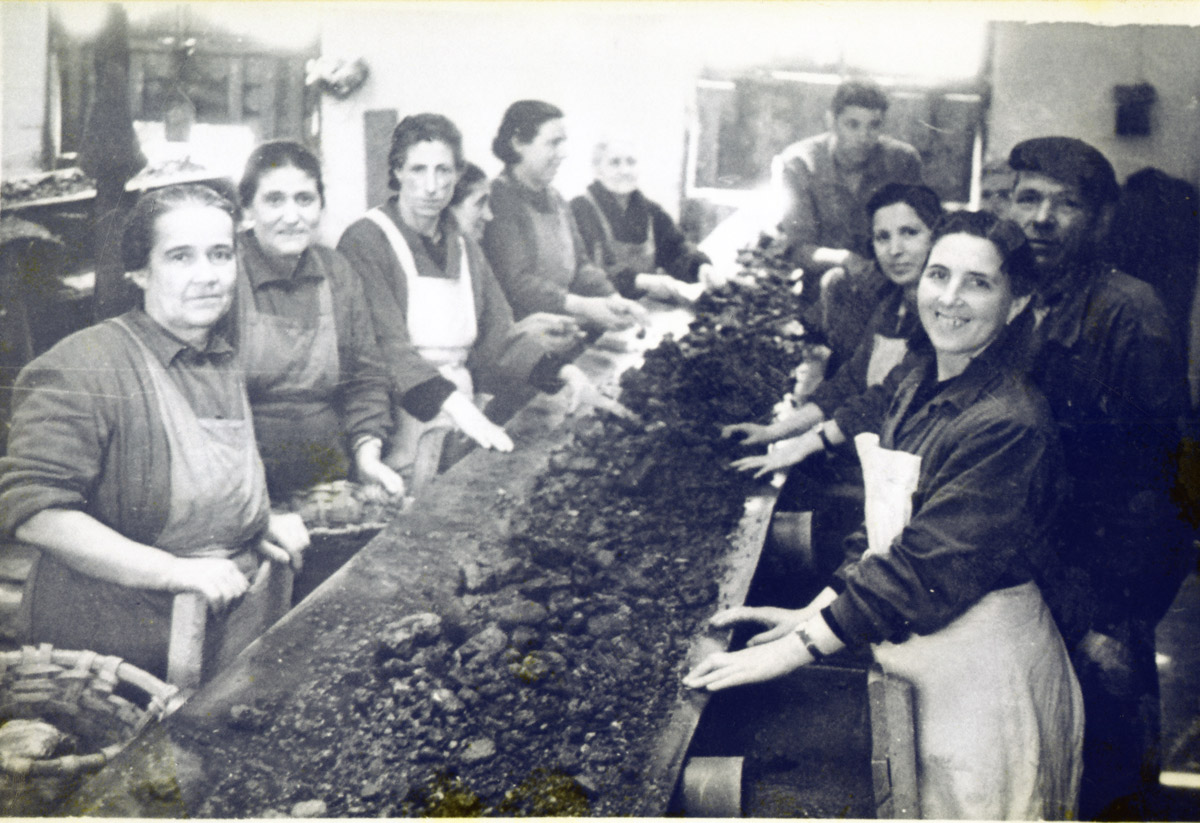
They began eating the mountain in 1958, reaching 25 meters below sea level, the deepest surface of the Basque Country since then. At the bottom is a dark blue lake, powered by waters that no one spends. They continued to excavate galleries in the underground, a black maze descending 205 meters below sea level, with sixty cameras that can house an eight-story apple. The thick silence it gives to the crater is better perceived by those who spent half of their lives working on it. Because for thirty years, this hole was navel of hell, because from here came blasts, swirls of dust, engine jars, buzzing machines, screams and dazzles.
“Here was my village,” says Karmelo Uriarte, 89 years old, serious gaze, face flexed down, retired miner’s large body, square shirt, left beret, iron saturated blood.
“But here where, Karmelo.
“Here, right here. Where you now see the hole before was Gallarta, the old Gallarta. Underneath they found a huge vein of iron and they started throwing the houses out. And this wasn't a village, huh! It had seven thousand inhabitants, the largest pediment in Euskal Herria with sixteen numbers, the church, the city hall, several schools. Do you see that the new gallarta was built a couple of miles further? But some of us are still in the old town for several years. We lived on the edge of the mine. It was terrible. From morning to night, we only had explosion and dust and noise.

The mine began operating in 1961. In the 1970s, 2.2 million tons of minerals were obtained each year, the second highest in Europe.
“It was the best iron mine in Europe in those years,” says Uriarte, proud. In other places mineral was extracted with a law of 46% or 48%, which here was at least 58%.
The best veins were quickly exhausted, in 1984 the open air exploitation ended and in 1993 the last underground galleries were closed.
“When the mine was closed, I was very sorry,” says Uriarte. We know it was a very hard trade, yes, but it was our life. And they abandoned him overnight. Nobody cared. I started to go into the galleries, to pick up the materials deposited there, for nostalgia. At first, screws and bolts, then we asked other retired colleagues for help, and we started picking up heavier objects -- caresses, drills, vagrants, machines -- of everything. The City Hall gave us in 1986 the building of the old slaughterhouse to house all the storms, so we started with the museum and now look.
It points to the Museum of Mining of the Basque Country, a flat and modern building of a rust color located on the edge of the crater.
“The hole is awesome, right?”
Reports show that the constant work of five hundred men had emptied the mountain for three decades.
“Just men, Carmelo?”
“Also women. When I was a kid, I would bring food to my mother, and there were the women cleaning up the ore, all standing, next to a tape where pieces of stone passed by. They were flushed with water, the mud was removed and the parts that had no value were cast. It was a tremendous job. For twelve hours standing, Monday to Saturday, with a snack swallowed in a hurry, cold, wind, water, mud... That was work, that was it. And they paid them four coins.
"The women performed two tasks: cleaning the mineral and making dynamite cartridges. When a man was mutilated, he got to work, but they paid more for the same job than women."
Foreman, pawn, auxiliary and woman
“When we talk about miners, men come to mind. But women were always in mining – says Haizea Uribelarrea, director of the museum. The two main tasks were the cleaning of the ore and the manufacturing of dynamite cartridges. They were paid very little. When a man was in an accident and he was crippled, he went to work, but they paid more than women for the same work.
Few testimonies have been collected from women miners. In the Museum there are photographs that show women in the mine and salary records that, in addition to the foremen, peones and companions, included a fourth category of work: “Woman.” They took half of their pawns and often didn't show up, because they were paid in black, no contract, no insurance, no retirement. There are few testimonies, because the work of the miners was very badly seen. There are women over the age of 80, in Gallarta, in Ortuella or in La Arboleda, who do not feel like talking about those jobs they have done in the past, because they were jobs of marginalized women, poor widows or single mothers, who suffered the stigma of not being sufficiently female, violent women, suspects, as the chronicles of the time said, ruthless women.
“And the miners were just a part. Women made a lot of professions that were indispensable for mining and industrialization, says Uribelarrea.
Historian Pilar Perez-Fuentes could not square the accounts. The Biscayan miners worked until the outbreak, for ten or twelve hours a day, destroying and loading stones in the rain, in the cold, in the hardest conditions; they lived stacked in barracks and had no protection when they got sick or aged. On their shoulders they built the prosperity of iron, the highest furnace, the shipping company, the bank and the bourgeoisie bilbain. But the barbarism they were charging was not enough for families not to starve to death.

– Perez-Fuentes states that the hidden work of women was essential to maintain the system. In the book Living and Dying in the Mines (Living in the Mine and Dying), she calculated that women covered up to 50% of family income. While men shattered the stone, women cared for their children, cared for the sick and wounded, prepared men's meals and took them to work, cleaned and sewed street and work clothes. They also welcomed young immigrants coming from Castile, Galicia, Andalusia or Extremadura, asked for a small income and took care of their meals and clothes. Women provided essential services to the system and employers did not spend a penny on it. Hence a large part of the wealth.
Aliron!
This one from Gallarta was the largest and last outdoor mine in Bizkaia. Yesterday the activity that this region has known since prehistory ended. The Roman historian Pliny the Elder cited on the Cantabrian coast a “great mountain of iron,” manufactured anchors, aperos, nails and weapons in medieval ferrerias, and the Vizcaine metallurgy spread throughout Europe in the following centuries: in English they used the word “bilbao” as a synonym for various irons, such as Shakespeare in Hamlet: “I lay worse than the mutines in the bilboes,” (“I felt worse than the rebels in my hands”). By the end of the 19th century, dozens of British companies and many other premises began to work on the left side of Bilbao, because here they had at their disposal the excellent iron, a great port and a cheap workforce. Twelve thousand workers were hired and each year they managed to extract 6.5 million tonnes of iron, one tenth of the world's production.
It was a frenzied time, which transformed the landscape: they destroyed mountains, rebuilt rivers, pierced giant lagoons, built furnaces to heat minerals, opened air trams for the transport of the mineral, inclined planes and the most compact rail network in Europe. Iron was the basis of the steel industry, of the shipyards, of the shipyards, of the merchants, of the largest bank, of the wealth of the Basque bourgeoisie. Barakaldo's furnaces illuminate Bilbao. And it was also the time of the fluttering scream, the call of an effervescent era.
When the iron extracted was very pure, they gave the miners an extra pay. And the news was sung: Aliron, Aliron! British engineers wrote in chalk ore: “all iron.” All iron
That brilliant wealth was based on the brutal exploitation of the workers. The miners began very soon, at least in 1827, to build slums in the upper parts of the mountains, to live near the mines and not have to climb every day. When iron fever was turned on, the villages appeared as mushrooms on the mountain, rather than the barracks. The neighborhood of La Arboleda was founded in 1877, next to the only forest that stood during the terrible deforestation, and therefore its name. In some slums the single miners followed the system of hot beds (three or four shift workers shared a bed, often a simple table) and in others families, beds and kitchen were accumulated in the same space.
The workers paid little wages and also applied very high prices on bonds to spend on canteens and economy of the company. The winter days were ten and a half hours of work, thirteen in summer. Pneumonia enlarged their lungs. Accidents hit your head, cut your arms, break your legs. Historians Escudero and Barciela of the University of Alakante estimated that in 1877, when the mining fever started to turn on, in the Left Margin they had a life expectancy of 36.5 years. By 1890 he was barred at the age of 19.9. Then it gradually elongated, until it was over 30 years in the early 20th century.
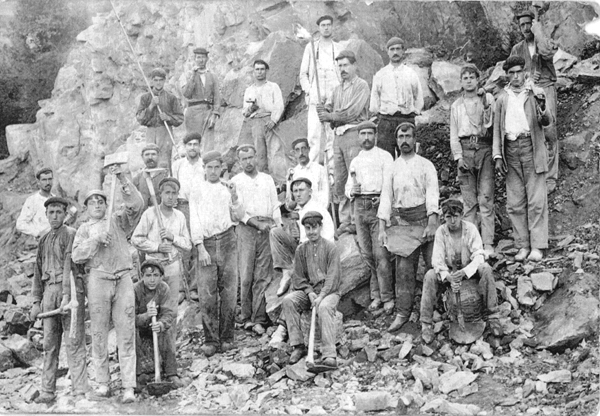
It is no coincidence that the improvement began in 1890, when the Biscayan miners called the first general strike. Socialism was firmly rooted in the small mountains of the Left Margin: the first Consistorial House was founded in La Arboleda in 1888; in Gallarta was born Dolores Ibarruri, daughter of a miner, wife of another, striker, historical communist leader, who used for the first time the nickname of Pasionaria in an article called The Biscayan miner.
When he was sent to press the 1890 strike, General Loma knew the living conditions of the mining neighborhoods: “In these huts, pigs should not live either,” he said. And he asked employers to negotiate with the workers. The miners were bought where they wanted and gained the right to life and reduced their working time to an average of ten hours. A further twenty-three strikes were convened over the next four years, and this helped to improve salaries, working hours, labour resources and insurance.
The calls for strike, the noises of sirens, the burning conferences of the Pasionist still echoed in Antonio Yunquera’s brain. He was another retired miner from Gallarta, a small, unstoppable man who moved in a mahon and beret suit, rescuing old utensils and abandoned machines to form the museum. Yunquera died in 2018 at the age of 96. We have your words left:
When he was sent to press the 1890 strike, General Loma knew the living conditions of the mining neighborhoods: “In these huts, pigs should not live either,” he said.
“I remember very well how the father of the work returned, soaked, broken, boots full of mud. If the stone was to be crushed and loaded, they were forced to do it with the worst raincoat, outdoors, cold. I saw it from a very young age. They allowed the kids of the miners to leave a little before school to bring the food to their father. And we also wanted to start working right away, when we were 13 or 14, to win a few diners. Because, of course, in homes there were many children and the need was extreme. And that's where the strikes came from: the need. It was enough to raise the bread five cents to ignite great disturbances, but always the face was pulled out by those who were in the greatest misery. There were also schirolas that were being beaten pernistically. It was terrible, terribly, because every time there was a strike, the Civil Guard came to stop some strikers and take them to the barracks. Nobody knew what was going on inside. The repression was very harsh, but it was worth it because thanks to those struggles they got everything we have now: eight-hour days, decent wages, holidays... And retirement! The old people at the time asked. If I couldn't work, I didn't charge anything. I have an image stuck in my head, a very sad image: those old sister-in-law, who have corrupted life in the mine, walk down the road to Portugalete or to Las Arenas, to ask for alms...
Cheaper than oxen
From the Cave of the Concha and the Museum of Mining, the BI-2757 shows a surprising landscape along its six kilometers to La Arboleda: destroyed mountains, landfills, artificial craters, galleries, remains of old industries. The village of La Arboleda is a miner, it is still noted: small wooden houses, fragile housing blocks for workers, the Socialist House of the People of 1888, the church consecrated to Santa María Magdalena (a woman who, although sinful and of bad reputation, came to sanctity, seems a choice made with all intent in the village of the miners). This is a sloping town, with narrow streets rising up the hillside. If the old Gallarta disappeared, La Arboleda remained at the tips of the giant holes. Since the closure of the mines, the water flooded these craters and formed lakes, which are now attractive places for fishing, fishing and fishing. There is a network of routes to slowly get to know the environment in which giant bites look, between the red mountains and green grasses.
Along the road from La Arboleda to Larreineta, women carrying baskets in their heads can be seen descending down the mountain in wall paintings.
“Sick women, unfortunate workers, with obscene chants and free renovations, dressed in rags, irresistible females, without shame, immoral women in the form of men, with unpleasant weights, who work in constant laughter, chatting, spinning, in a hard job that has ruined the flower of beautiful sex.” This description was published by the Bilbaíno weekly The Class Struggle in 1897. The Socialists were also more concerned about the loss of the female ideal than about the working conditions of stigmatizing women.
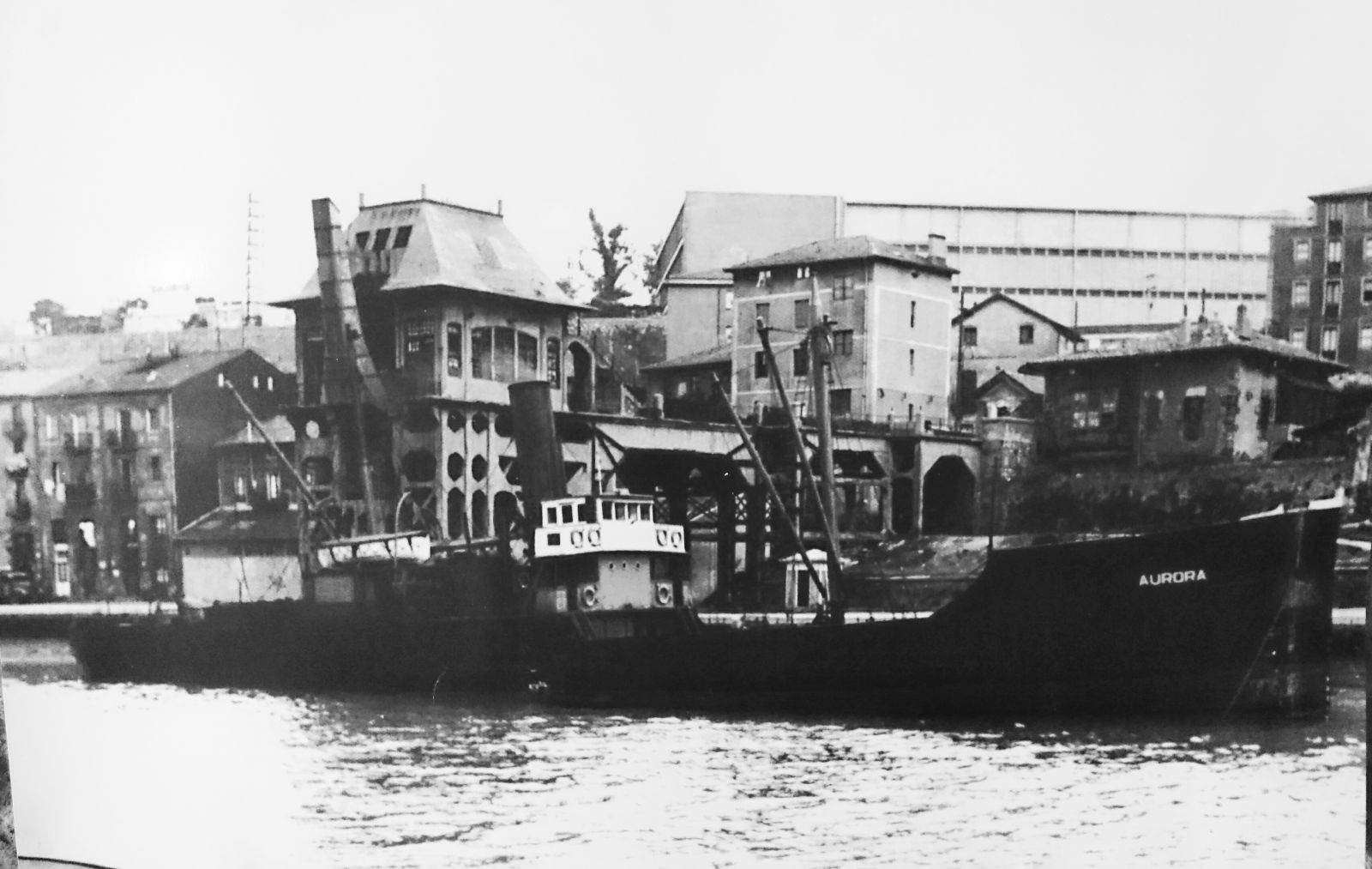
Olga Macías Muñoz, who has studied the importance of women in the industrial development of the Bilbao estuary, refers to this section.
We will go down to the estuary, to Professor Macías, in the funicular of Larreineta. Built in 1926 to transport mineral from the mountains to the springs, it was conditioned for the transportation of people and today it is still in operation. Macías wrote a thesis about the railway network that met in this mining, industrial and port area, in which she found women who, on behalf of the animals, carried out loading tasks: stowers and servants.
– The dockers carried in their heads large baskets carrying iron ore, coal, sand, cod and a lot of goods from the boats to the warehouses. They worked between six o'clock in the morning and six o'clock in the afternoon, both in the sun and in the rain, transporting 40 or fifty kilos on each trip, charging much less than men doing similar physical work,
says Macías, sitting on a seat of the Cirgueros Pier, in the district of Olabeaga.Los servants carried out another part of the process: they climbed along the shore of the sea, the thick chuneven
- Didn't they do that drag job with oxen pairs?
-Yes, until they saw that women were cheaper. They had to feed the oxen, store them in blocks ... Businessmen spent less for a few cents on surgeons.
These women fed Bilbao, as during the great expansion they were the ones who transported the materials the city needed. Their misery did not disturb any authority until they realized they gave a bad image of the city. Macías mentions a letter published by an English newspaper in Bilbao that described “the tingling of women” who discarded coal from a boat in the very center of the city: vagabundos of convalescent, pregnant women with severe pain, cured mothers who rolled in the ramp of the boat and mixed with dirty faces and porters passing from dawn to afternoon. Sitting in any corner of the street, they ate a lump of bread, slept in the houses of the mountain neighborhoods, confusing themselves with the workers to get some favor on the way of vice. Many were widows, single mothers, who admitted miserable wages because they had no choice but to survive, and that is why, many times, they also practiced prostitution.
Many were widows, single mothers, who admitted miserable wages because they had no choice but to survive, and so many times they also engaged in prostitution.
“We were known as a whore,” says Manuela Moreno. She was born in the mid-century of the demise of the gorges, but she also had to carry that stigma, like all the women who worked at the Artiach cookie factory, like many women who worked in many places.
The former factory is located in the Deusto Bank, at the height of the Cirgaris Pier. It is a brick and glass facade building abandoned by the damages caused by the 1983 floods and which now houses a laboratory of contemporary technology, design and culture: Open space, a pot of social concerns of all kinds. Moreno is pleased when he sees young people organizing seminars, exhibitions and markets in his old work.
“I was in the olatas department. In the machines, making very big obles.
Moreno is a woman with a round, joyful face, wide eyes and bluish short hair, who goes from room to room from the old factory, knowing the place where the crackers' boxes were prepared, and here the manager's office, where the principal office of the director, tells how they entered once without touching the door, to leave a boring ranch dish they were given to eat at the director's table and open a worker's dossier. He points out a gate, through which the Armed Police entered, the crutches in his hand, on that strike at the end of 1974, in which he was still a novice worker, and then the hallway, they all ran out, when the police had counted up to three days after doing the cargo mine.
“They didn’t charge him because we got out at full speed. But we keep fighting, we organize a lot of stops, demonstrations, assemblies... We called for wage increases and better working conditions. We were treated badly, because almost all of us were women. Seventeen women and two men were finally dismissed.
“Why were almost all women?”
“For that reason, because it was in their interest, because they paid us much less than men.
“What about a slut?”
“Many years ago, women engaged in prostitution came to this factory. For the company it was a cheap labor force, for them it was a step forward, because they had better work, a safe income, and they also prepared a nursery in the workplace itself, because many of them had small children. Hence the fame of the working women of Artiach emerged.
“And what did they tell him around him when they knew he had to start working at Artiach?
“Think! Artiach no, there you know... prostitutes go to work there... It seemed the same to me. I worked here with my head up.
Gabarra upstream
One kilometer higher in the Ria, at the foot of the San Mamés stadium, you can see the famous barge used by Athletic players to celebrate the League and Cup titles of 1983 and 1984. Then, when thousands of fans of the bank sang “Alirón, Alirón, Athletic Champion”, the mine, the pier and the football came together, rounding the identity symbols of a society that danced in a voiced way.
But personality is elastic, we question memory, and symbols can be reinterpreted.
The barge continued to be used for port work for years, until it was abandoned in Santurtzi, and in 2013 it was transferred to the dry dock of the Bilbao Maritime Museum. In 2016, the controversy broke out: When Athletic women won the League, many fans and personalities asked that they also sailed to celebrate the victory, but the club decided no, that they would not take out the barbeque for women. What and the barbeque, precisely the women promoted transport as a cargo animal, now turned into a floating podium to pay tribute to the champions, but only to the men champions.
At the beginning of the 21st century, Athletic women won four straight Leagues, but then there was not even mention of Gabarra. In those years, they received very little attention. The fifth, though, was in 2016, when women's football was expanding remarkably. The players went out to the balcony of the City Hall, on the border of the river, dedicating the trophy to some twenty thousand amateurs. Between shouts and applause, the song “gabarra nahi dugu!” which was heard out loud.
“It was the most exciting time in my career,” says janitor Ainhoa Tirapu. We've had nine years without winning anything, after being second for many years, and that's really disappointing for an athlete. One day we got the title and we got a lot of it. Bilbao was with us.
Tirapu was one of the most important footballers of the Athletic champion, who played 15 seasons and 358 games, participated in the Euro Cup and the World Championship, won two Leagues and was one of those who most raised his voice to professionalize women’s football. Half of the First Division players did not receive any salary, and among those who received something, a third did not reach the 500 euros per month, according to the Association of Spanish Footballers. Tirapu was the spokesperson for the football players who conducted a tough negotiation with the employers for seventeen months, opening the call for a strike until the signing of the first agreement in history: a minimum wage of 16,000 euros per year (that of men was then 150,000), regulation of working days, holidays, sick leave and maternity leave... As they struggled for these basic conditions, stadiums were fulfilled as never before: In San Mamés, 48,000 spectators met to see a Madrid-Atlético match in Madrid, in Anoeta another 36,000 in a Real-Athletic, in the Wanda of Madrid 60,000 in an Atlético Madrid-Barcelona...
Players signed the agreement in February 2020 and Tirapu left football in April at 36.
“It’s time to leave the way for the young people,” he said.
Football came out of the mines. The British who came to exploit iron at the end of the 19th century, who wrote “all iron” on the rocks, also brought the first balls.
In his early years, while taking care of Athletic’s door, Tirapu graduated in Chemistry and presented his final master’s degree in abandoned mining pollution. Football came out of the mines. The British who came to exploit iron at the end of the 19th century, who were said to write “all iron” on the rocks, also brought the first balls, organized the first matches in the Camp of the English, celebrated the first goals and inspired a group of local sportsmes to create Athletic Club. On the road from the explosion of the first dynamite to the celebration of the last gulf, in this century and a half full of forces, excesses, strikes and triumphs, women have always been fighting.
Tirapu is well aware of the underground origin of his story.
“You don’t have to go to Gallarta, in the very center of Bilbao you can find a mine.
- In the center?
“Yes, in Bilbao, in Bilbao La Vieja, near my house. I'm going to tell you where it is.
By the Viscera of Bilbao
Among the bridges of the Ribera and San Antón, few people see this gray metal door of the Martzana pier. Located next to the restaurant Mina, it looks like an entrance to a warehouse, but it is the atrium of one of the most amazing places in Bilbao: Mina San Luis.
It was intended to be open to the public, but it is impossible to guarantee the safety of visitors and can only be met with special permits. Haizea Uribelarrea, director of the Mining Museum, has earned us the key to the door and the best driver: Emiliano Valdiza, 87, the last employee of this mine, who in 1995 closed the door and turned off the light.
–In Bilbao itself, under the central floor, was a mine working until 1995?
“Well, until 1987. There has been no activity in the last eight years, but I continued here with the last group of workers in surveillance.
“What did you do before?”
“I was a welder, I was always doing mine maintenance work. We came from Cantabria at the age of 24, starting with the hole in Gallarta and then, from the age of 28, always here, welder from San Luis, until retiring.

"Six or seven women stood in line with the tape through which the mineral was passing, and the day they went there, standing, taking out the mud with water, in an inhospitable and colder environment, thinks what it would be like in winter..."
Emiliano is a small man, with two skylights shining on the cursed face. It goes slowly into the dark, holding firmly on to the stick, but you can see that we are walking in its area. It tells us that we're going to enter the sweeping step, that to be careful with the irons that have been exposed on the walls, it shows us the rusty pipes and the white stalactites and shows us the crosses.
“From here we could continue for a hundred meters. This other branch is longer. Cut off by the slopes, the gallery continues below the neighborhoods of Miribilla and San Francisco. At the bottom of the streets, the miners worked at the bottom of the houses, of course they did. They would take out the blonde [Limonite, an iron oxide], carry it by hand in vagrants and get it down from this gallery to the loading area. They then took the mineral to the foundries.
Valdizán mentions a deceased colleague as a result of an explosion, but does not want details.
“Emiliano, what was the hardest of all the works of the mine?
“The women who chose stones in the laundry, no doubt. They stood in line six or seven, next to the tape through which the mineral was passing, and the day they passed there, standing, taking out the mud with water, in an inhospitable and colder environment, thinks what it would be like in winter... So were women discriminated, as they are now, to understand? They received a lower wage than men, so they chose them to do that job. Women have always paid less.
Just twenty years ago, Miribilla Hill was a huge exploitation of irons, a clear mountain ingested with machines, a purple field filled with fireplaces and drilled by galleries. After the closure of the mines, it was urbanized with three thousand homes, large parks and long walks, until creating a modern, comfortable and pleasant neighborhood.
“Fewer and fewer people know the story under their feet,” says Haizea Uribelarrea. But this post-modern Bilbao would not be so if it were not for that underground past, for mines and industries, for the thousands of immigrants who came to work, for the women who worked in such harsh conditions. They also built Bilbao.
Hiru bideo dira (albiste barruan ikusgai). Batak jasotzen du, grebak antolatzea leporatuta, Carabanchelen espetxeratu zituzten Jesús Fernandez Naves, Imanol Olabarria eta Juanjo San Sebastián langileak espetxetik atera ziren unea, 1976ko abuztuan. Beste biak Martxoak... [+]
Otsailean bost urte bete dira Iruña-Veleiako epaiketatik, baina oraindik hainbat pasarte ezezagunak dira.
11 urteko gurutze-bidea. Arabako Foru Aldundiak (AFA) kereila jarri zuenetik epaiketa burutzera 11 urte luze pasa ziren. Luzatzen den justizia ez dela justizia, dio... [+]
Bilbo Hari Gorria dinamikarekin ekarriko ditu gurera azken 150 urteetako Bilboko efemerideak Etxebarrieta Memoria Elkarteak. Iker Egiraun kideak xehetasunak eskaini dizkigu.
33/2013 Foru Legeari Xedapen gehigarri bat gehitu zaio datozen aldaketak gauzatu ahal izateko, eta horren bidez ahalbidetzen da “erregimen frankistaren garaipenaren gorespenezkoak gertatzen diren zati sinbolikoak erretiratzea eta kupularen barnealdeko margolanak... [+]
79. urtean, Vesubio sumendiaren erupzioak errautsez eta arrokaz estali zituen Ponpeia eta Herkulano hiriak eta hango biztanleak. Aurkikuntza arkeologiko ugari egin dira hondakinetan; tartean, 2018an, gorpuzki batzuk aztertu zituzten berriro, eta ikusi zuten gizon baten garuna... [+]
Luxorren, Erregeen Haranetik gertu, hilobi garrantzitsu baten sarrera eta pasabide nagusia aurkitu zituzten 2022an. Orain, alabastrozko objektu batean Tutmosis II.aren kartutxoa topatu dute (irudian). Horrek esan nahi du hilobi hori XVIII. dinastiako faraoiarena... [+]
AEB, 1900eko azaroaren 6a. William McKinley (1843-1901) bigarrenez aukeratu zuten AEBetako presidente. Berriki, Donald Trump ere bigarrenez presidente aukeratu ondoren, McKinleyrekiko miresmen garbia agertu du.
Horregatik, AEBetako mendirik altuenari ofizialki berriro... [+]
Andeetako Altiplanoan, qocha deituriko aintzirak sortzen hasi dira inken antzinako teknikak erabilita, aldaketa klimatikoari eta sikateei aurre egiteko. Ura “erein eta uztatzea” esaten diote: ura lurrean infiltratzen da eta horrek bizia ekartzen dio inguruari. Peruko... [+]
1936ko Gerran milaka haurrek Euskal Herria utzi behar izan zuten faxisten bonbetatik ihes egiteko. Frantzia, Katalunia, Belgika, Erresuma Batua, Sobietar Batasuna eta Amerikako herrialdeetara joandako horien historia jasotzeko zeregin erraldoiari ekin dio Intxorta 1937... [+]
49 urte eta gero Espainiako Poliziak Gasteizko Maria Sortzez Garbiaren katedralean eraildako bost langileak oroitu dituzte beste behin astelehen arratsaldean. Milaka pertsona batu dira Zaramagatik abiatutako eta katedralean amaitutako manifestazioan. Manifestari guztiek ez dute... [+]
Martxoaren 30erako Iruña-Veleia martxan, SOS Iruña-Veleia eta Euskeraren jatorria elkarteek manifestaziora deitu dute, Aski da! Argitu, ez suntsitu lelopean. Azken bi urteetan "hondeatzaileak sistematikoki eremu arkeologiko oso aberatsak suntsitzeko modu... [+]
1976ko martxoaren 3an, Gasteizen, Poliziak ehunka tiro egin zituen asanbladan bildutako jendetzaren aurka, zabalduz eta erradikalizatuz zihoan greba mugimendua odoletan ito nahian. Bost langile hil zituzten, baina “egun hartan hildakoak gehiago ez izatea ia miraria... [+]
Martxoak 3ko sarraskiaren 49. urteurrena beteko da astelehenean. Grebetan eta asanblada irekietan oinarritutako hilabetetako borroka gero eta eraginkorragoa zenez, odoletan itotzea erabaki zuten garaiko botereek, Trantsizioaren hastapenetan. Martxoak 3 elkartea orduan... [+]
Memoria eta Bizikidetzako, Kanpo Ekintzako eta Euskarako Departamentuko Memoriaren Nafarroako Institutuak "Maistrak eta maisu errepresaliatuak Nafarroan (1936-1976)" hezkuntza-webgunea aurkeztu du.









